Abstract
During 1986-87 this continuing survey showed 15 specific infections in the staff of 235 laboratories, representing 28,524 person years of exposure. The community was the probable source of four of the five cases of tuberculosis and one of the five cases of salmonellosis. Occupational exposure was the probable cause of four infections by Shigella flexneri, three by Salmonella typhimurium, and one by S typhi, all affecting medical laboratory scientific officers (MLSOs) in microbiology. Occupational exposure was also the probable cause of one case of tuberculosis in a mortuary technician and one of probable non-A, non-B hepatitis in a medical laboratory scientific officer haematology worker. The overall incidence of reported infections was 52.6/100,000 person years (35/100,000 for infections of probable occupational origin). The highest rates of laboratory acquired infections related to MLSO microbiology workers and mortuary technicians. No additional infections were seen as a result of extending the survey to forensic laboratories.
Full text
PDF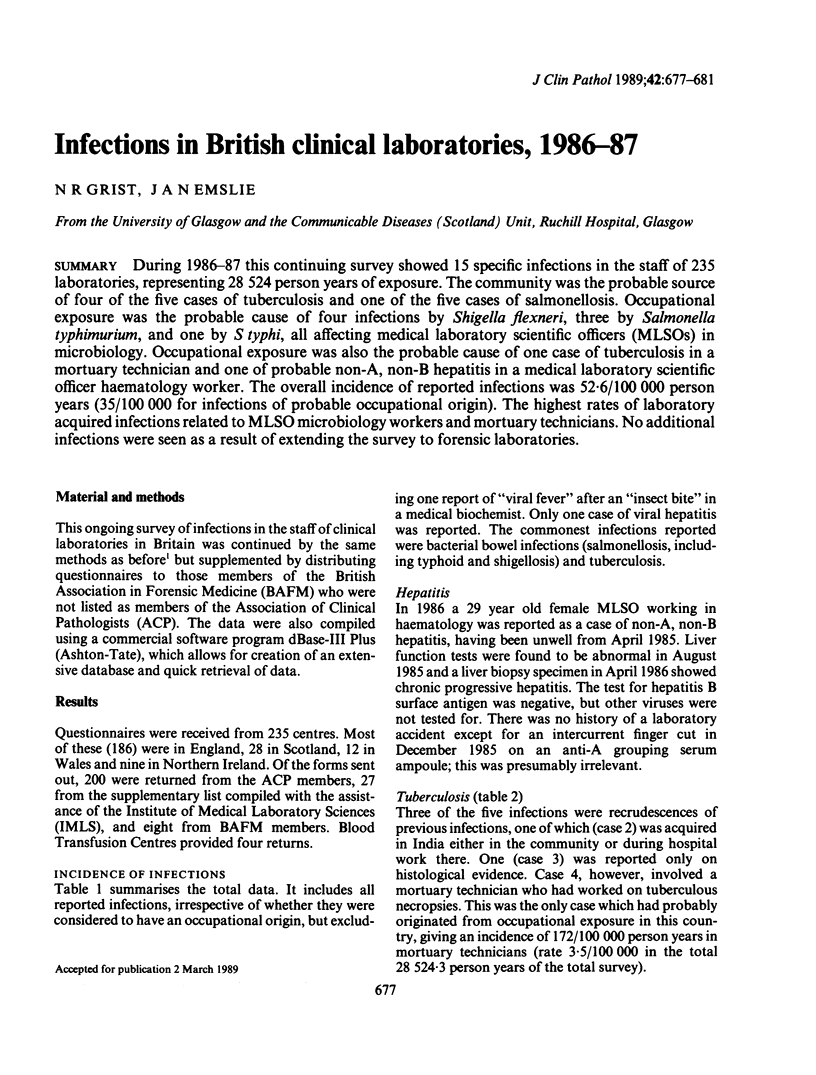
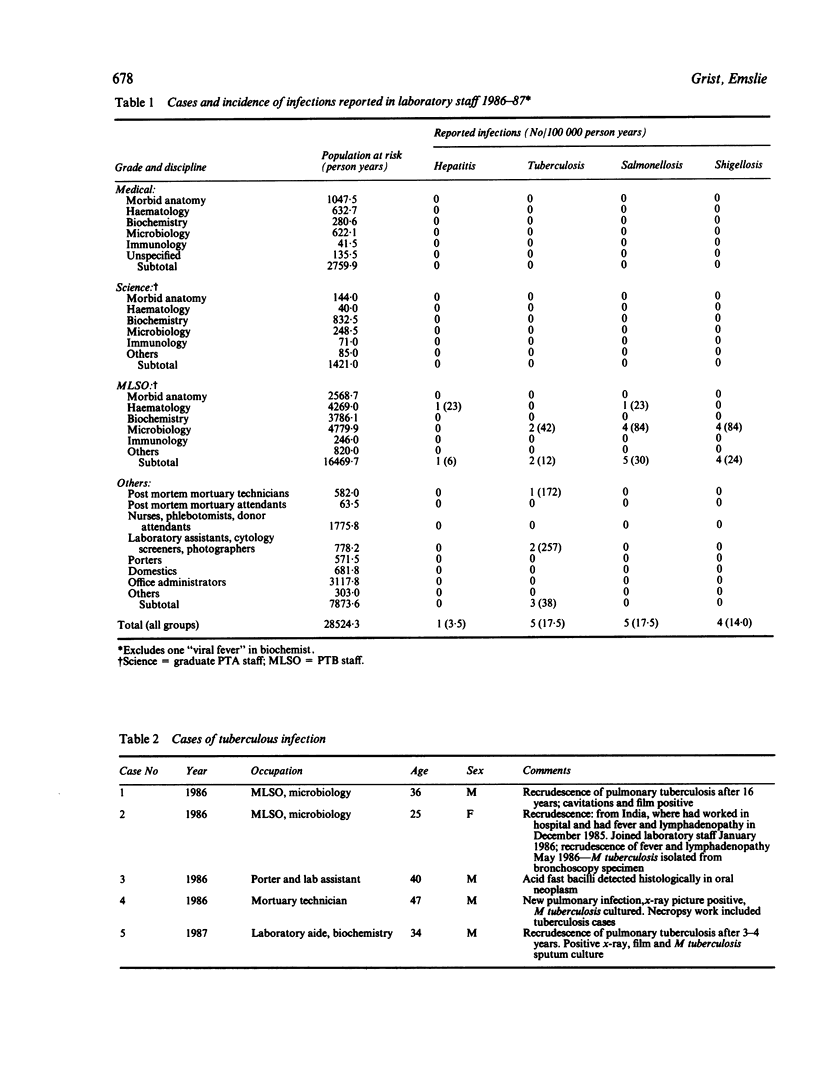
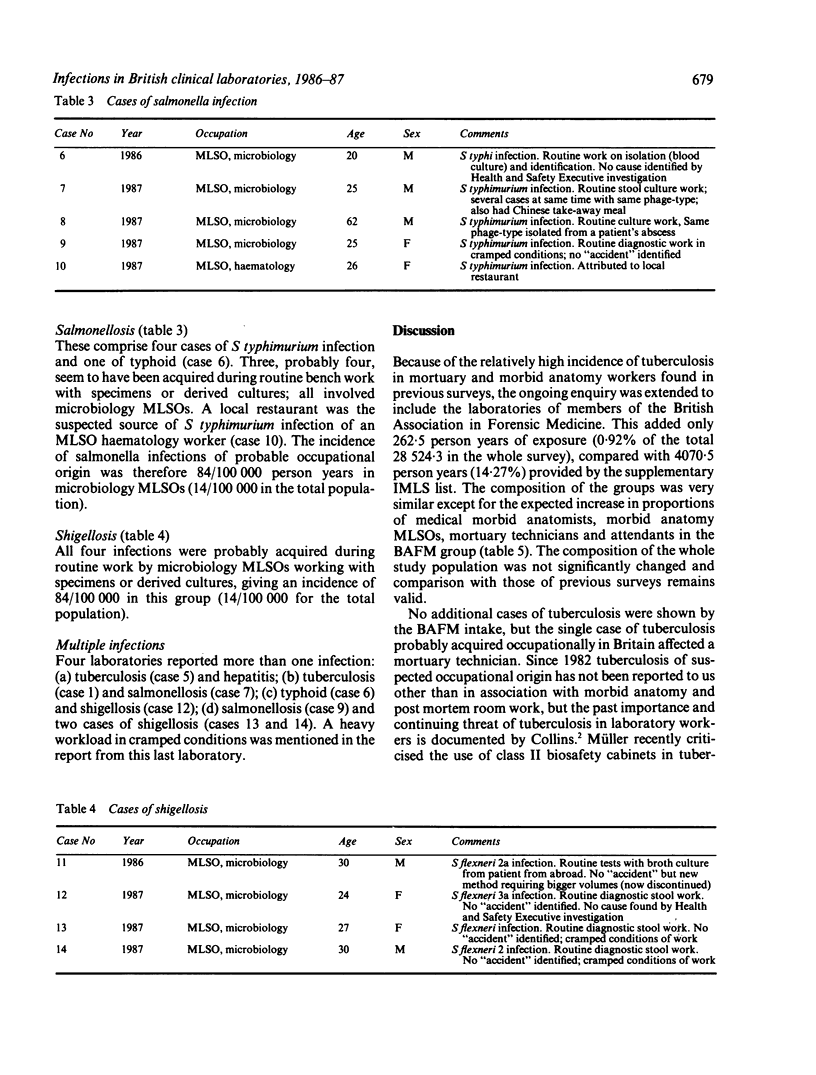
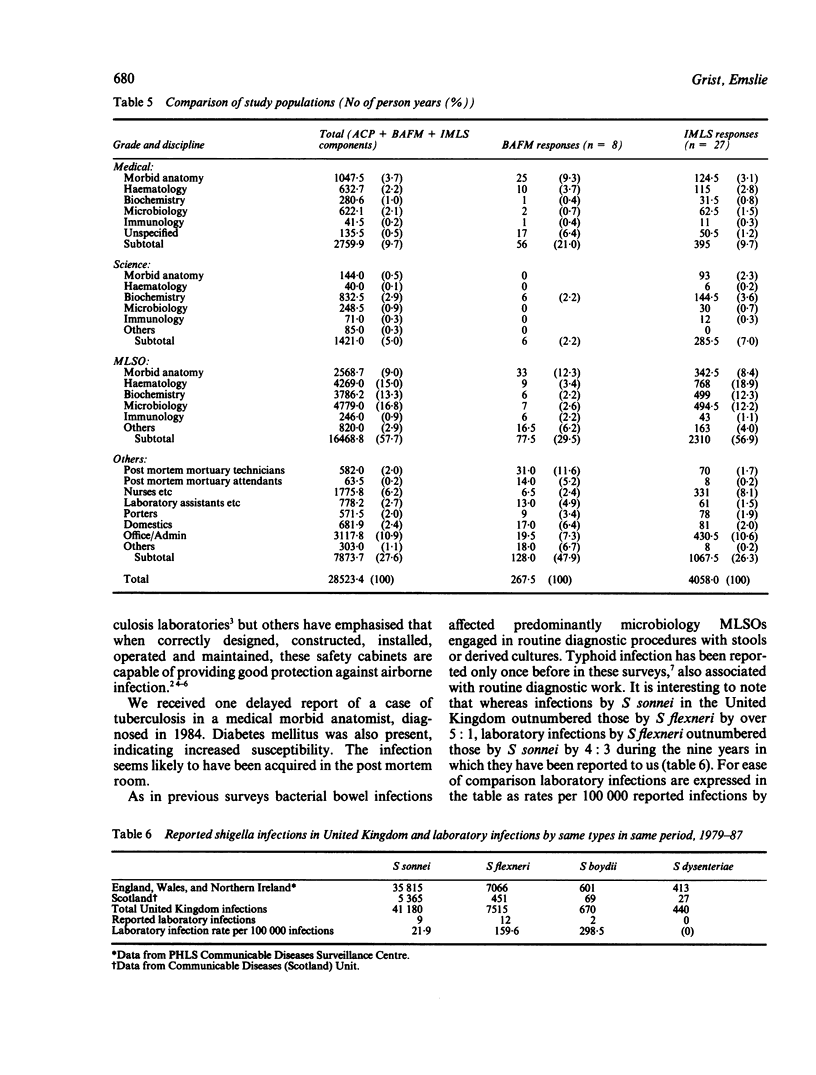
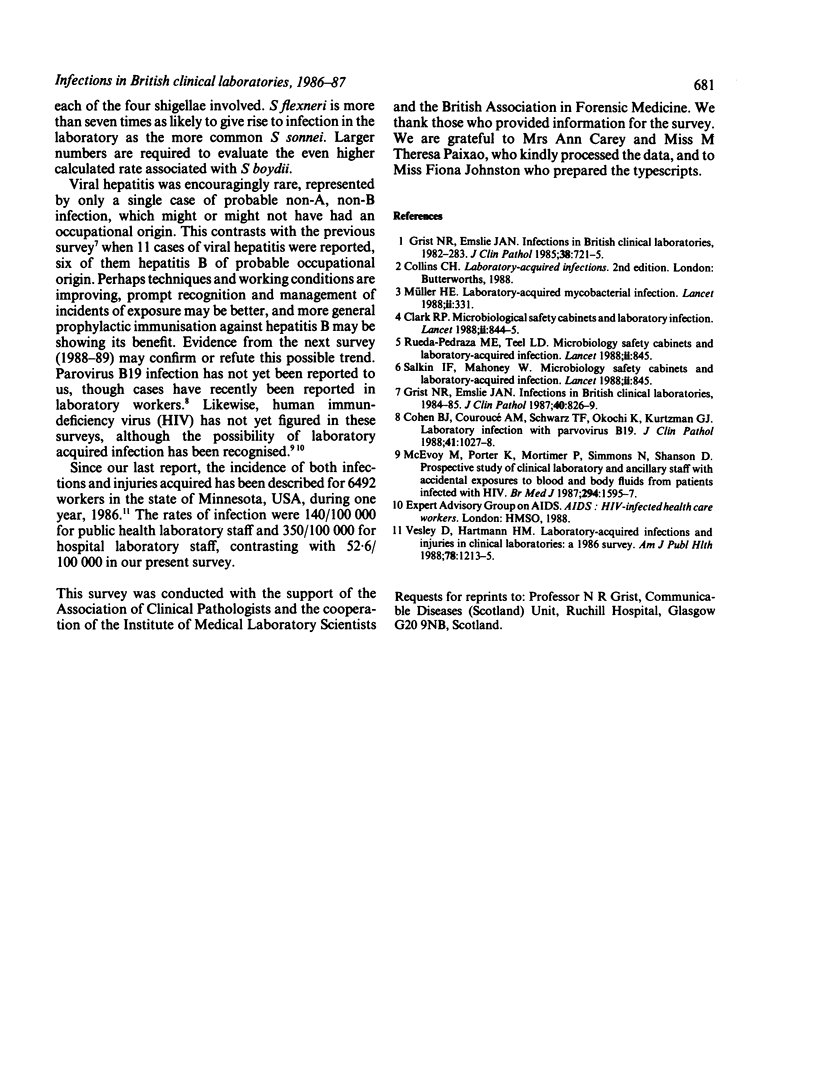
Selected References
These references are in PubMed. This may not be the complete list of references from this article.
- Bottazzo G. F. Islet cell antibody standard serum. Lancet. 1988 Oct 8;2(8615):845–845. doi: 10.1016/s0140-6736(88)92802-4. [DOI] [PubMed] [Google Scholar]
- Cohen B. J., Couroucé A. M., Schwarz T. F., Okochi K., Kurtzman G. J. Laboratory infection with parvovirus B19. J Clin Pathol. 1988 Sep;41(9):1027–1028. doi: 10.1136/jcp.41.9.1027-b. [DOI] [PMC free article] [PubMed] [Google Scholar]
- Grist N. R., Emslie J. A. Infections in British clinical laboratories, 1984-5. J Clin Pathol. 1987 Aug;40(8):826–829. doi: 10.1136/jcp.40.8.826. [DOI] [PMC free article] [PubMed] [Google Scholar]
- Grist N. R., Emslie J. Infections in British clinical laboratories, 1982-3. J Clin Pathol. 1985 Jul;38(7):721–725. doi: 10.1136/jcp.38.7.721. [DOI] [PMC free article] [PubMed] [Google Scholar]
- McEvoy M., Porter K., Mortimer P., Simmons N., Shanson D. Prospective study of clinical, laboratory, and ancillary staff with accidental exposures to blood or body fluids from patients infected with HIV. Br Med J (Clin Res Ed) 1987 Jun 20;294(6587):1595–1597. doi: 10.1136/bmj.294.6587.1595. [DOI] [PMC free article] [PubMed] [Google Scholar]
- Microbiological safety cabinets and laboratory acquired infection. Lancet. 1988 Oct 8;2(8615):844–845. [PubMed] [Google Scholar]
- Tarn A. C., Thomas J. M., Dean B. M., Ingram D., Schwarz G., Bottazzo G. F., Gale E. A. Predicting insulin-dependent diabetes. Lancet. 1988 Apr 16;1(8590):845–850. doi: 10.1016/s0140-6736(88)91601-7. [DOI] [PubMed] [Google Scholar]
- Vesley D., Hartmann H. M. Laboratory-acquired infections and injuries in clinical laboratories: a 1986 survey. Am J Public Health. 1988 Sep;78(9):1213–1215. doi: 10.2105/ajph.78.9.1213. [DOI] [PMC free article] [PubMed] [Google Scholar]


